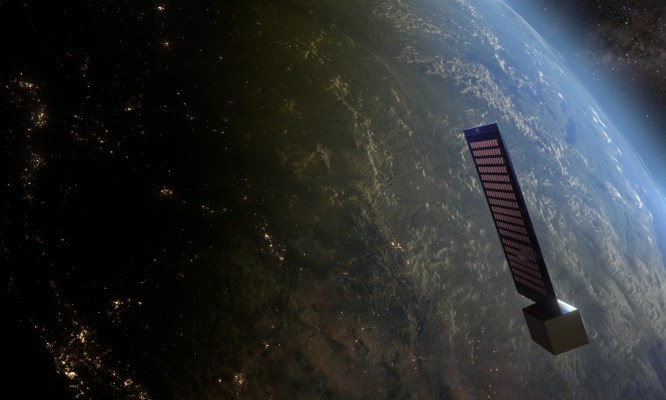It’s an oft-told story: The boom of space startups today can be traced to dramatically lowered cost in launch and satellite manufacturing over the past 10 years. But Array Labs, a two-year-old startup based in Silicon Valley, is also taking advantage of other technological developments in its quest to build a 3D map of Earth.
Those include computation gains, like in advanced graphics processors (GPUs), and radar software development, Array CEO Andrew Peterson explained. Peterson, an aerospace engineer who had previously worked for General Atomics Aeronautical Systems and Moog’s space and defense division, said the revolution in scientific computing has opened up new possibilities.
“If could take all of this superpower that we were seeing in radar and scientific computing, and you could couple that with really low-cost satellites . . . there’s probably a really, really interesting way to do a new type of Earth observation,” he said. “This was the best idea that I’ve ever had.”
Array plans to map Earth in 3D by flying clusters of radar satellites in low Earth orbit to image the same place at the same time. By capturing imagery of the same place from different perspectives, the company hopes to capture a full, high-resolution 3D digital record of the world. It works similarly to synthetic aperture radar, but the exact technique is known as “multistatic radar,” so named because of how multiple radar satellites work cooperatively across spatial distance.
According to the company, the 3D data will be of such high resolution to be used by driverless vehicle fleets, AR headsets, insurance analytics, and in national security applications.
This is not the first time a group has attempted to use space-based radar to generate global 3D imagery. Back in 2003, the Air Force Research Lab made plans to launch a program called TechSat 21 that would do exactly that, Peterson said. But it was handicapped by limitations in compute. For example, the TechSat 21 team had to solve the bandwidth problem: How do you get enough bandwidth to store all the data the radar is going to generate?
“The system that they had come up with was ten spinning hard drives that are all rated together,” he said. “It weighed maybe 20 pounds, took 150 watts [of power]. Now, something the size of my thumbnail has 100 times more performance and 100 times less cost.”
Peterson launched the startup in 2021. Array’s first angel investor was Brian McClendon, an engineer who oversaw the development of Google Earth. To scale even further, Array quickly joined two accelerators: Seraphim Space Camp in fall 2021 and Y Combinator the following year. It closed a $5 million seed round last October, led by Seraphim Space and Agya Ventures, with participation from Republic Capital, Liquid 2 Ventures, Rebel Fund, and Y Combinator co-founder Trevor Blackwell.
The plan is to launch clusters of satellites, each consisting of around a couple dozen satellites; the eventual goal is to launch and operate 10 to 20 clusters. But even a single cluster will be capable of capturing 5% of the world’s surface, which accounts for 95% of the world’s population, every two weeks, Peterson said. Array will launch its first test satellite on a SpaceX ride-share mission next year, the first in a series of test satellites designed to iteratively de-risk different aspects of the company’s technology.
Before it gets there, Array is doing as much of the testing on the ground as possible. The 10-person team set up an indoor radio frequency (RF) test range to prove out its image formation algorithms and software prior to first launch. The company is planning on publishing a blog post on the system, detailing the process of creating a rendering of the SAR testbed in CAD, to taking the delivery of the rig in their Silicon Valley parking lot, to generating the first clean radar image.

Array Labs CEO Andrew Peterson in front of the radar test range. Image Credits: Array Labs
“Building a little bit in public is really, really important,” Peterson said. “We’re doing something really, really new and we would love to talk to as many of these companies, as many people at these companies, as we can.”
